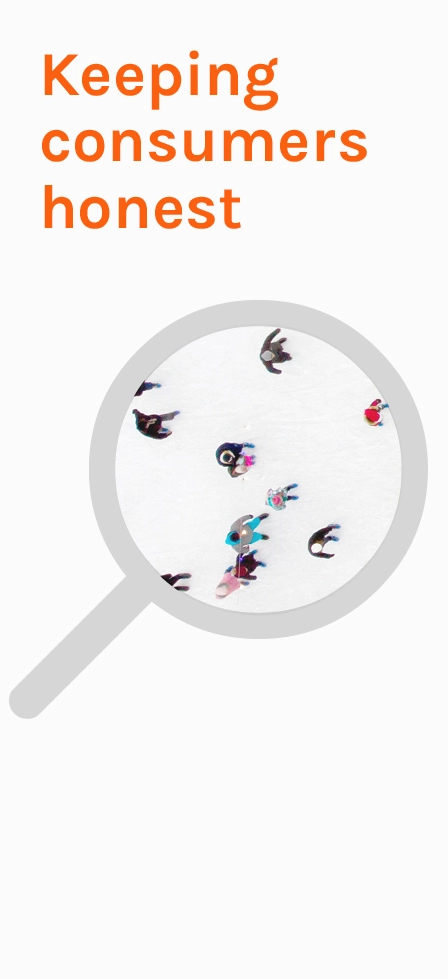Meaningful, transformative innovation helps brands become more competitive. The best path to successful activation for innovation begins with building real empathy with consumers to understand their wants, needs, and desires, and the best way to do this is through meaningful observation and interaction with them through ethnography work.
In a recent blog post, we addressed myths about innovation, including the fallacy that brands often believe they inherently know best what their consumers want. This narrow thinking can make it tempting to skip the ethnography work in an innovation process to save time and money, and to avoid the emotional and sometimes messy insights that it produces. However, it is almost impossible to use only rational thinking to develop innovation that truly solves consumers’ problems. It takes a combination of both, the rational and the emotional, to activate meaningful and sustainable innovation.
The role of ethnography in building empathy.
Ethnography has become an extremely important method for observing and interviewing people in the context of their day-to-day lives rather than in a prescribed setting, such as a focus group facility.
As we meet with people where they live, work, play, eat, sleep, or shop, we gain a much deeper understanding of consumers’ mindsets, natural behaviors, beliefs, routines, and choices. Connecting with consumers in this way allows us to develop a more insightful picture of what they need or want. It also helps us identify the barriers preventing them from achieving their desired outcomes.
The insights we gain from these sessions help us discover the “why’s and how’s” behind their behavior, and lights the path to unique and meaningful solutions.

The best path to successful activation for innovation begins with building real empathy with consumers to understand their wants, needs, and desires, and the best way to do this is through meaningful observation and interaction with them through ethnography work.”
Challenge your assumptions to uncover truths about your consumer.
Engaging in a dialogue with consumers gives you the advantage of moving from assumptions — or even judgements — about their actions to a better understanding about what influences their behavior.
For example, ever since prepared, ready-to-heat or boxed meals were launched in the 1950s, parents have often been judged for serving them to their families as meal short-cuts. But when you really peel back the onion with parents, you begin to understand that these meals are an excellent way to get the most from their grocery budget by stretching the protein (the most expensive ingredient). Additionally, parents have discovered that everyone in the family enjoys and eats these meals, giving them the peace of mind that all will leave the table satisfied. This is a contributing factor to recent growth in ready-to-heat meals with today’s consumers.
Developing a deeper understanding of why consumers choose this option opens the door to new opportunities. It’s healthy and critical for a team to challenge their assumptions about their consumer targets before trying to create new products or services to meet their needs.
Finding empathy insights in claimed versus honest behavior.
Personal finance is often an area where consumers have a wide mix of emotions that can range from pride to shame, and even denial. In the work we do for financial services, we’ll often discover that people are simply unaware of some of their financial behaviors.
For example, we may survey a head-of-household on their savings habits, and they’ll report that they save a percentage of income each month. However, when we are sitting at a consumer’s own dining room table and ask them to create a pie chart of their monthly spending and savings, a different reality emerges. They may point to some expensive home repairs that are preventing them from saving right now or show us how their home heating bill has increased, taking more than expected out of the savings budget.
It’s natural for consumers to want to present an idealized version of their spending habits, but the opportunity to sit down and dive into their budgeting process can reveal insights about their behavior that are rooted in deep and honest revelations. With a broader understanding of how consumers perceptions can differ from reality, brand teams can develop more relevant and actionable ways to help consumers visualize their spending and saving habits.
Transferring empathy to move stakeholders to action.
The insights we uncover in our ethnography work are powerful and play a critical role in helping stakeholders take action on the results. Ethnography leads to storytelling which is an effective tool that highlights insights with the consumer’s voice. This storytelling method, often accompanied by videos and quotes, helps engrain the learnings in the minds of stakeholders. As we’ve learned through history, a good story will stand the test of time, and consumer stories are an effective tool in driving new action.
With any research activation, our goal is to bring in rich insights to share the learning with stakeholders, peers, and leaders within your company. The overall impact of leading with ethnography is to build “collective empathy” with your broader organization, and this empathy plays an essential role in developing lasting, relevant innovation.
Want to learn more about our approach to ethnography?
Contributors: Shari Aaron, Shayna Beckwith, and Joanne Suh





